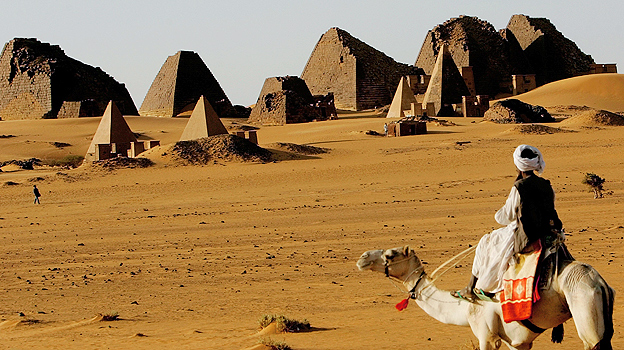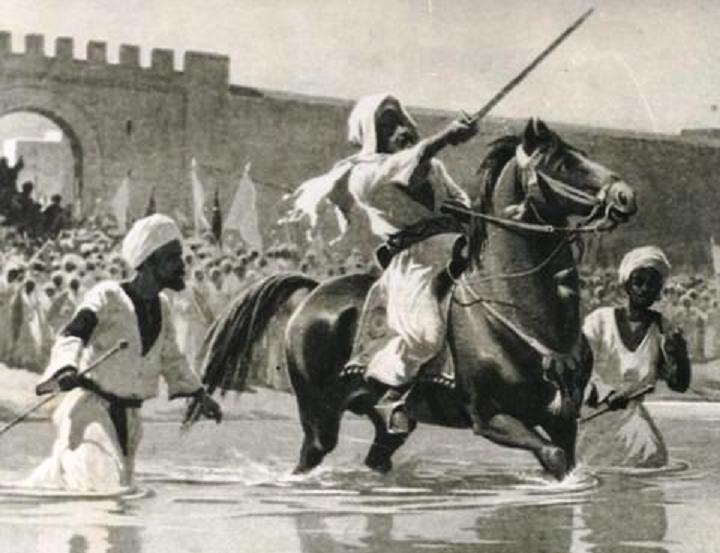History
SUDAN HISTORICAL TIMELINE
A time line overview of big and small events in the history of Sudan.
Please note: the current situation in Sudan is EXTREMELY complicated and this outline of the historic background cannot give the full image. The page is only an attempt of a general overview and still under construction!
MODERN TIME SUDAN
1820: Sudan is conquered by Turkey and Egypt.
1881: Rebellion against the Turkish-Egyptian administration.
1882: The British invade Sudan.
1885: An Islamic state is founded in Sudan.
1899: Sudan is governed by British-Egyptian rule.
1955: Revolt and start of the civil war. INDEPENDENCE
1956: Sudan gains independence.
 1958: A military coup takes place in Sudan. The civilian government is removed.
1958: A military coup takes place in Sudan. The civilian government is removed.
1962: The civil war breaks out in the southern (mainly Christian/African) parts of Sudan.
October 1964: People of Sudan rebels. The military junta falls after a communist general strike. A national government is formed.
May 1969: New military coup placing Jaafar Numeiri at power.
1971: Leaders of the communist party are executed for attempting a coup against Numeiri.
1972: A peace agreement is signed in Addis Ababa. The southern Sudan achieves partly self-governance. INGREDIENTS FOR WAR: OIL AND SHARIA
1978: Large findings of oil are made in Bentiu, southern Sudan. The oil becomes an important factor in the strife between North and South.
1983: Numieri introduces the Islamic Sharia law to Sudan leading to a new breakout of the civil war in the Christian south. In the south the forces are led by the Sudan People’s Liberation Movement (SPLM) under command by John Gerang.
1985: President Numieri is removed from power in a military coup.
1986: A civilian government is made in an effort to restore peace after general elections.
1989: Al-Bashir and his Islamic Front (NIC) take power in a military coup.
1995: The Sudanese government is accused of being part of an attempt on the life of Egyptian Prime Minister Mubarak. UN decides on sanctions against Sudan. US ATTACK ON SUDAN
1998: USA launches a missile attack on a chemical plant in Khartoum assumed to develop chemical weapons possibly in corporation with the Al-Qaida terror network. Civilians are killed in the attack. The Sudanese government denies any link to terror and chemical weapons.
1998: A new constitution in Sudan.
1999: The president dissolves the national assembly and declares state of emergency.
1999: Sudan starts an export of oil assisted by China, Canada, Sweden and other countries.
2001: An internal struggle in the government, leads to the arrest of an ideological leader who were making peace attempts with the Sudan People’s Liberation Army (SPLA)
March 2001: Hunger and famine in Sudan affects 3 million people.
May 2001: A Danish pilot flying for the International Red Cross is attacked and killed when delivering aid in southern Sudan. All flights in the area are temporarily stopped.
June 2001: Peace negotiations break down in Nairobi, Kenya.
August 2001: The Nile river floods leaving thousands homeless in Sudan.
September 2001: the UN lifts on sanctions against Sudan to support ongoing peace negotiations.
October 2001: Following the New York terror attacks, USA puts new sanctions on Sudan due to accusations of Sudan’s involvement with international terrorism.
During 2001: More than 14,550 slaves are freed after pressure from human rights groups. NEW HOPE FOR PEACE?
January 2002: A ceasefire between government forces and the SPLM are finally agreed upon.
July 20th 2002: the government and SPLA signs a protocol to end the civil war.
July 27th 2002: President al-Bashir meets for the first time with SPLA leader John Garang. Ugandan president Yoweri Museveni has arranged the meeting. The war in Sudan is also having huge impact on the northen Uganda.
July 31st 2002: Government attacks SPLA again.
October 2002: The ceasefire is confirmed again, but remains very uncertain. Peace negations still continues during the next years.
February 2003: The 2 rebel groups representing the African population in Darfur starts a rebellion against the government as protest against neglection and suppression.
December 2003: Progress is made in the peace negotiations. The negotiations are mainly focused on sharing the important oil-resources. UPRISING IN DARFUR
January 2004: Government army strikes down on uprising in Darfur region in the Western Sudan. More than 100,000 people seeks refuge in Chad.
May 26th 2004: A historic peace agreement is signed, but the situation in Darfur remains unchanged and extremely critical.
January 9th 2005: In Nairobi the government and rebels signs the last parts of the peace treaty for Southern Sudan. All fighting in Africa’s longest civil war is expected to end in January 2005, but the peace agreement still doesn’t cover the Darfur region. More than 1.5 million people lost their homes since the conflict in Darfur broke out early 2003.
March 15th 2005: United Nations Security Council agrees to send 10,000 peace keeping soldiers to Southern Sudan. Again the decision does not cover the Darfur region.

